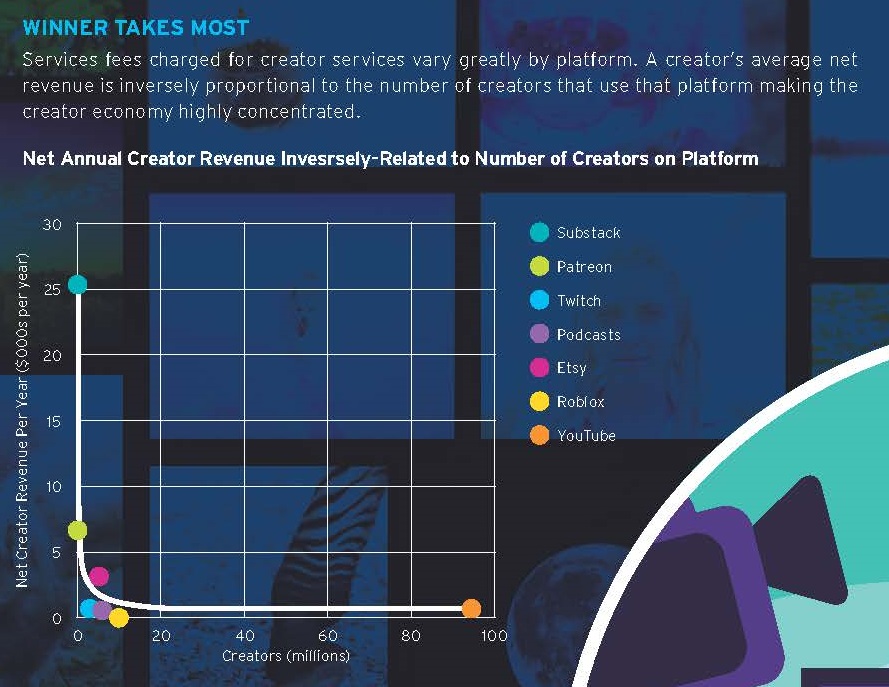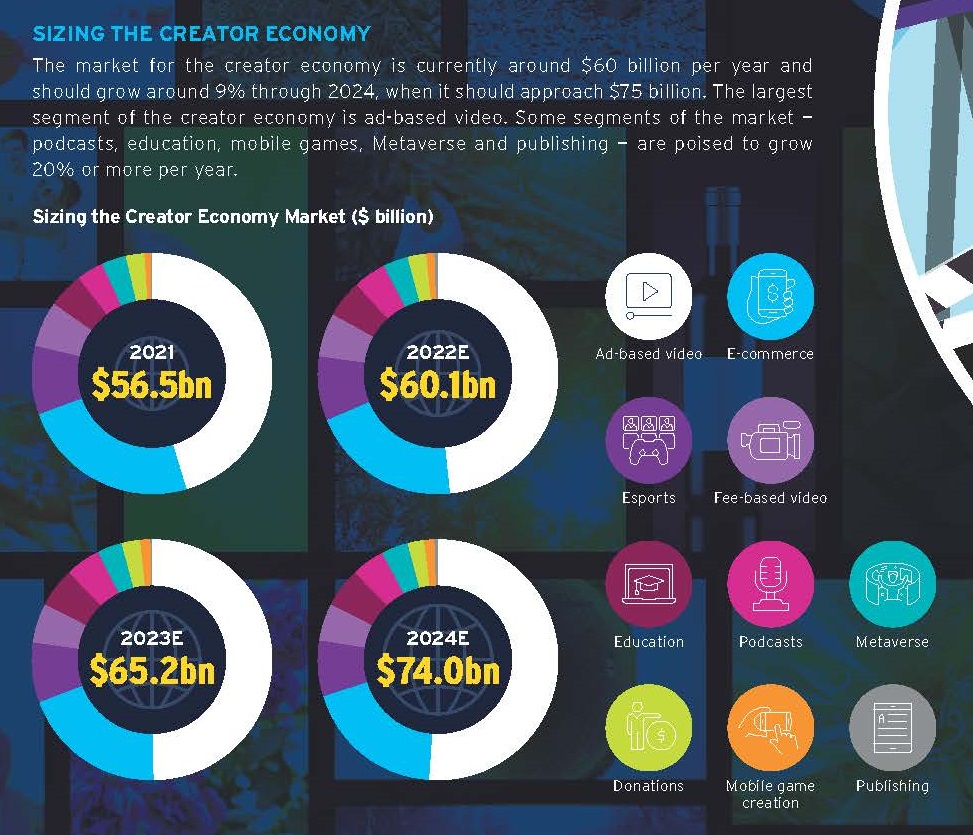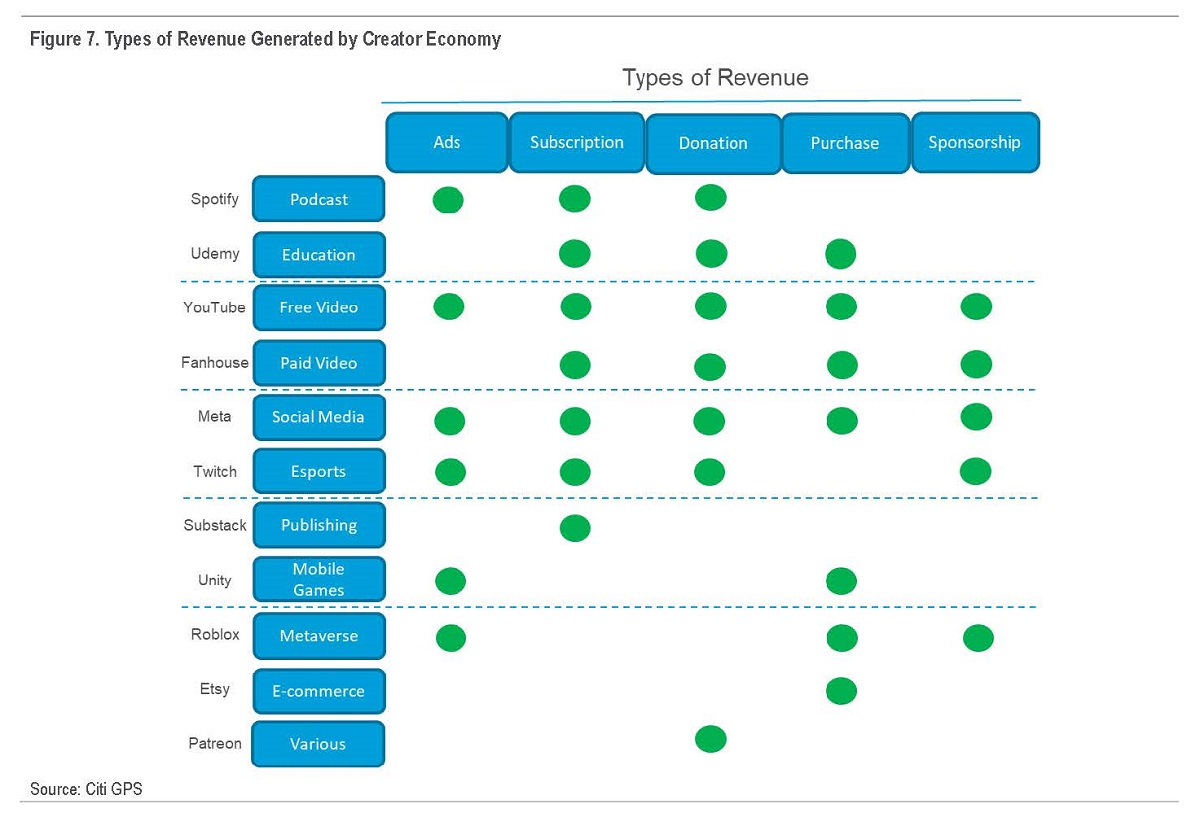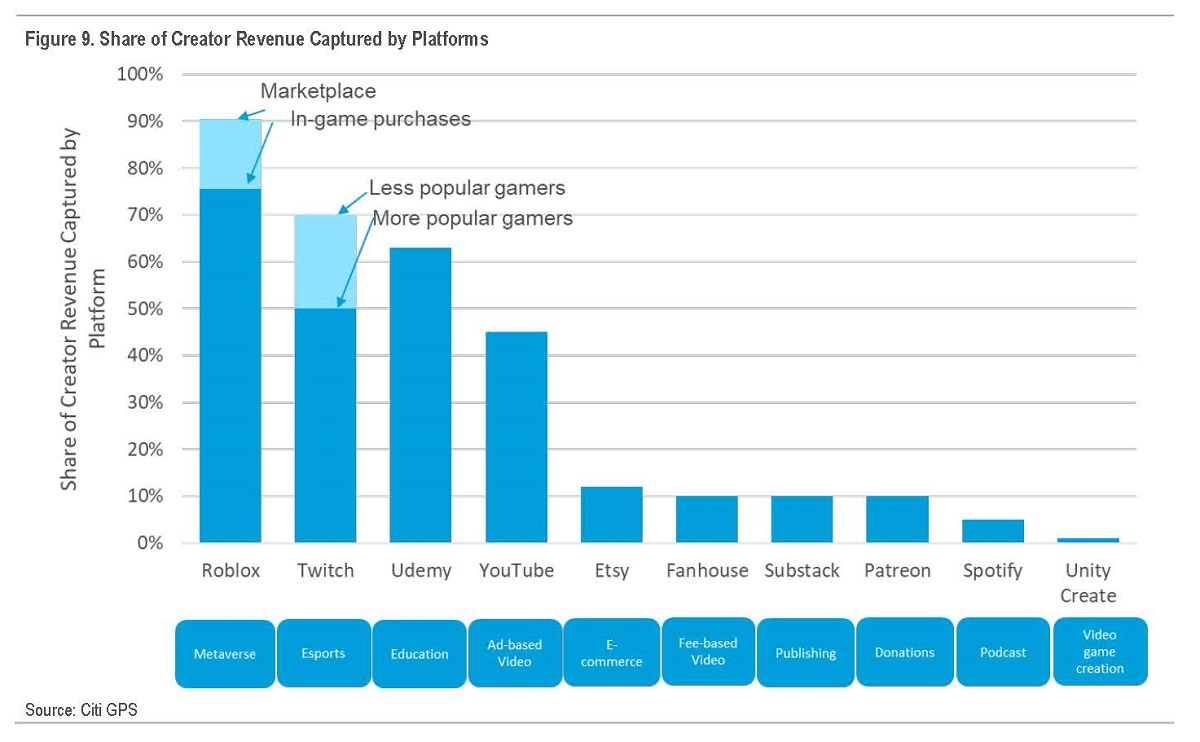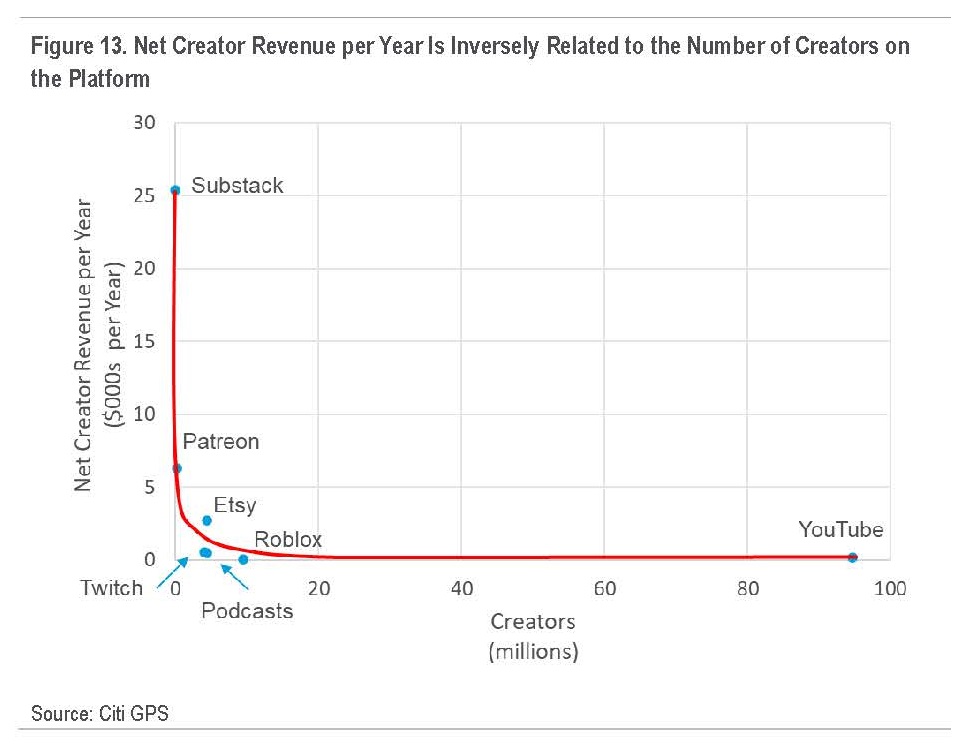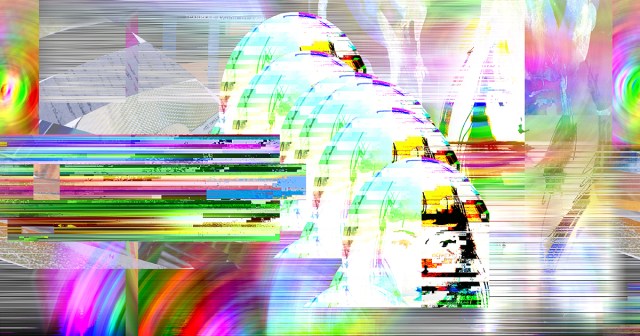
LEARN MORE ABOUT THE CREATIVE ECONOMY: Creator Squared Sessions at NAB Show
TL;DR
- Around half of creator economy revenues stem from ad-based video platforms like YouTube.
- A creator’s average net revenue is inversely proportional to the number of creators that use the platform.
- The role of AI and Web3 technologies are highlighted for their near-term potential to supercharge the entire sector.
LEARN MORE AT NAB SHOW: Creator Squared Sessions at NAB Show
READ MORE: The Creator Economy — Getting Creative and Growing (Citi GPS)
The burgeoning creator economy — of content creators monetizing their content directly with fans — is estimated to be worth $75 billion by next year and has caught the attention of big finance.
The findings of banking group Citi may not be revelatory but the fact that conventional finance has charted the market lends weight to arguments made by Web3 exponents that change in the distribution of labor and reward is afoot.
In its report, “The Creator Economy — Getting Creative and Growing (Citi GPS),” Citi calculates there are over 120 million content creators worldwide and expects 9% growth per year through 2024.
Estimating the figure is challenging due to platform overlap. For example, a gamer that creates a live stream on Twitch may also have a YouTube channel and a Patreon account. And some YouTube channels are associated with traditional media firms (like a film or a blockbuster video game).
However, even with these complexities, there are stark differences between platforms. Citi estimates YouTube has nearly 100 million channels (excluding traditional media). Roblox has about 10 million developers. Etsy has about four million sellers. There are currently more than four million podcasts. At the other end of the spectrum, Substack only has a few thousand writers.
Around half of the revenue stems from ad-based video platforms, like YouTube. The other half is spread across a wide array of industries: publishing, education and podcasting, among others. Platforms charge fees that can vary from less than 10% of creator’s revenues (Patreon, Spotify and Unity) to as high as 85% (Roblox). Citi thinks the variance often depends on the value the platform provides across five functions, which it identifies as creation, hosting, distribution/promotion, and monetization. The more functions these platforms perform, the higher the fees.
The lion’s share of the revenue is captured by a very small portion of the content creators. Far more than 80% of the revenue is created by far less than 20% of the creators.
How much can a creator make in net revenue after paying fees to the various platforms varies considerably. The report suggests that a writer for Substack generates, on average, $25,000 per year. The average creator that uses Patreon generates $6,000 per year. At the other end of the spectrum, a developer that creates items for Roblox generates, on average, just $50 per year.
Citi concludes that a creator’s average net revenue is inversely proportional to the number of creators that use the platform. That is, while Substack writers generate the most net revenue, the platform has very few writers. YouTube is at the other extreme. While there are many creators on YouTube, the average net revenue per creator is quite modest. Revenue per creator on the other platforms — Etsy, Twitch or Roblox — falls in between.
Going forward, the bank highlights three areas worth watching.
First, traditional social media firms may begin to share some of the spoils with content creators. That is, platforms like Twitter may begin to emulate YouTube’s business model. Or, as Instagram and Facebook push further into e-commerce, they will create opportunities for content creators to share in the economic spoils.
Second, Web3 tools — like blockchain and crypto — will allow consumers to finance, own, and trade content rather than simply paying creators to consume it.
Digital wallets are one way that new Web3 tools can help creators with monetization. Using a subscription model linked to a digital wallet, readers can access creator content stored on a decentralized storage layer. The subscription paves the way for creators to build a wallet-based community that enables far richer engagement than passive consumption more common with Web2 tools.
“Whether these new tools will be embraced by legacy creator economy platforms or new platforms remains to be seen. But, Web 3.0 tools will certainly result in new innovations that are apt to benefit creators and consumers alike.”
Third, artificial intelligence may alter the creator economy in several ways including by helping with content creation, helping brands find the right influencer or helping consumers find the right content.
“We expect AI to be used to help bring some order to the highly fragmented creator economy ecosystem. For example, AI will likely be used to help consumers find the right content and can also be used to help brands find the right influencer.”
CRUSHING IT IN THE CREATOR ECONOMY:
The cultural impact a creator has is already surpassing that of traditional media, but there’s still a stark imbalance of power between proprietary platforms and the creators who use them. Discover what it takes to stay ahead of the game with these fresh insights hand-picked from the NAB Amplify archives:
- How Creators (Professional and Otherwise) Are Making Money in the Creator Economy
- Almost 25% of Us Are Content Creators. Here’s Why That’s Awesome (and How It’s Actionable).
- Storytelling on Demand: It Has to Happen for the Creator Economy
- In the Creator Economy, Creator-Educators Contain Multitudes
- The Economy Part of the Creator Economy
- Why Community Is Everything for the Creator Economy


